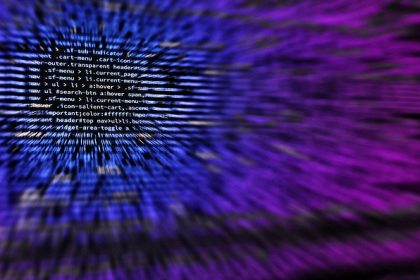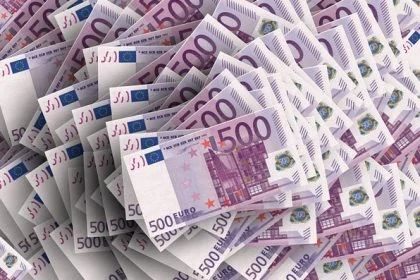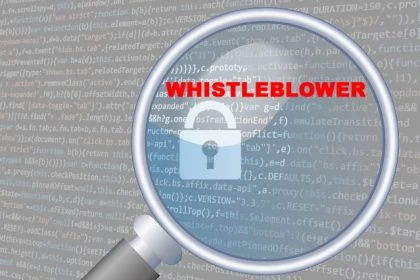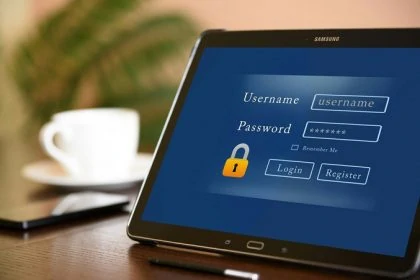In its guidelines, the EPO explicitly mentions computer-implemented inventions. A look at case law of EPO shows how they are implemented in practice. Algorithm, database connection – is this patentable? And how? This overview is also including the recent decision of the EPO concerning Microsoft Technology Licensing and its cost-based optimization of a query.
 In principle, Computer-implemented inventions are patentable – programs for computers, coding or an algorithm as such, however, are not. This is based on Article 52 of the European Patent Convention (EPC), according to which abstract and intellectual inventions cannot be patentable because they lack the indispensable technical character.
In principle, Computer-implemented inventions are patentable – programs for computers, coding or an algorithm as such, however, are not. This is based on Article 52 of the European Patent Convention (EPC), according to which abstract and intellectual inventions cannot be patentable because they lack the indispensable technical character.
However, if a patent application refers to a technical purpose, non-technical features or processes may also be patentable.
Computer-implemented inventions are patent claims comprising computers, computer networks or other programmable devices. Case Laws show how features can be assessed in the context of the list in Article 52(2). The examples show which criteria are important for European computer-implemented inventions. In the Guidelines for European Patent Applications, the EPO explicitly mentions computer-implemented inventions; a look at the Case Law shows how they are implemented in practice.
In principle, care must always be taken to specify technical features and, if possible, a technical functional purpose in a patent application. But even then, the invention must still be inventive, i.e. it must stand out from known knowledge.
Case 1:
Whether a program on a computer-readable medium is patentable was decided differently by the EPO, and the Enlarged Board of Appeal was then asked for an opinion on the patentability of computer-implemented inventions (CIIs)( G 3/08), which took place in May 2010.
Accordingly, a procedure that can also be carried out mentally is excluded from patent protection, even if it is accompanied by technical considerations.
Case 2:
As a rule, claims of a financial, administrative or commercial nature are not patentable. Let us consider the following case: a procedure is applied for, for example, to determine an optimal price for a trip, whereby the predetermined database includes additional requirements and a corresponding fare for each additional requirement. The goal is an optimized fare. Here the technical character of the invention is only given by the integration of the database as a computer-readable medium, because the objective technical problem to be solved is seen as the automation of the business method. However, a business method is considered non-technical and not patentable. The use of a database is not new, the patent is rejected due to lack of inventive step.
Only data structures used for functional purposes are regarded as contributing to the creation of a technical effect (T 424/03). Therefore a cost-based optimization of a query can also have a technical character (T 1965/11), but in this case the query was carried out in a relational database system. It was decisive that the query included further technical considerations in connection with the internal operation of the computer system.
Case 3:
In a recent decision of the EPO (T 0697/17 (SQL extensions/MICROSOFT TECHNOLOGY LICENSING) of 17.10.2019) also the focus is on the cost-based optimization of a query in a relational database system. The Examining Division held that the “execution algorithm” was a non-technical characteristic which did not serve any technical purpose but consisted of a series of steps concerning the logical structure of the data stored in the database, those steps being based on logical definitions of update operations. Therefore, the Examining Division refused the patent application.
The Board of Appeal has now decided otherwise. The “execution algorithm” serves the general technical purpose of carrying out the update of the data stored and managed by the relational database management system and contributes to the calculation of the data structure. Therefore, the algorithm must be taken into account when assessing inventive step. This case was referred back to the Examination Division for reassessment.
Case 4:
Block Mining, made famous by Bitcoins, has long since become an indispensable technology. Blockchain concepts are widely used in supply chain management, from access to patent communities to vehicle theft protection to car sharing.
Basically, such inventions have good prospects of patentability. This is because processes designed to increase data integrity and/or security in connection with data storage, processing and retrieval are considered by nature to be technical.
Therefore, all procedural steps of a claim “Block Mining” contribute to the technical character of the invention, so that the examination of the claim can follow the problem-solving approach defined in the EPO Guidelines G-VII, 5.4: accordingly, the search for the nearest prior art must also include the mathematical method, since it contributes fully to the technical character of the claimed object.
Case 5:
The implementation of a non-technical process (such as optimization of a business method) on a computer is not patentable. However, the procedure also contains technical considerations on the internal functioning of the computer, this may also lead to the patentability of such a procedure. What is decisive is a specific technical effect through the execution of the procedure on the computer (T 2330/13).
Case 6:
Computer-implemented simulation methods are considered patentable in most cases. This also applies where computer-aided simulation techniques involve mathematical formulae, the EPO ruled in the case of Infineon Technologies (T 1227/05). Circuit simulations had the necessary technical character because they were an essential part of the circuit manufacturing process, it was argued.
Case 7:
Search indices for a specific access to stored data have also been regarded several times as part of the solution to the technical problem.
In Decision „Yahoo und Web page indexing“ (T 1902/10 of 2016), a RAM-based hash table of fingerprints of stored URLs was used to determine whether a URL already existed in a database of processed web pages. And the specific choice of bit strings and matrices claimed with the aim that an evaluation of the selection conditions could be efficiently performed in parallel was also considered patentable in 2018 (T 2330/13).
Case 8:
Machine learning and Artificial Intelligence are of course also part of the big trend – but they are not computer-implemented inventions.
The new EU directive “Artificial intelligence and machine learning” assigns calculation models and algorithms to artificial intelligence (AI) and machine learning (ML). All the methods mentioned in AI and ML are seen as “per se abstract mathematical nature”, irrespective of whether they can be trained based on training data.
Do you have any questions concerning your patent and patent claim- e.g. the technical feature or the technical purpose?
Our lawyers will be happy to advise you. If you are interested, please contact us – we look forward to hearing from you!
Sources:
Links to the relevant case law are placed directly in the text
Image:








Leave a Reply